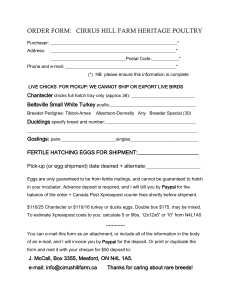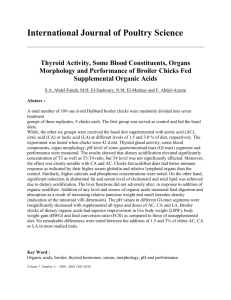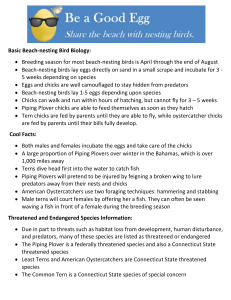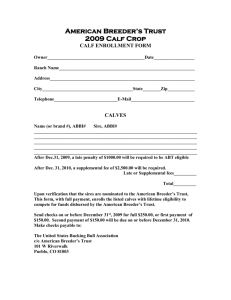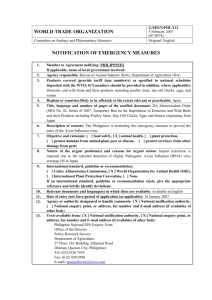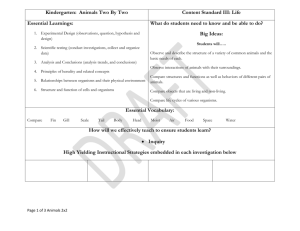ROOT CAUSE ANALYSIS – A SYSTEMATIC APPROACH
advertisement
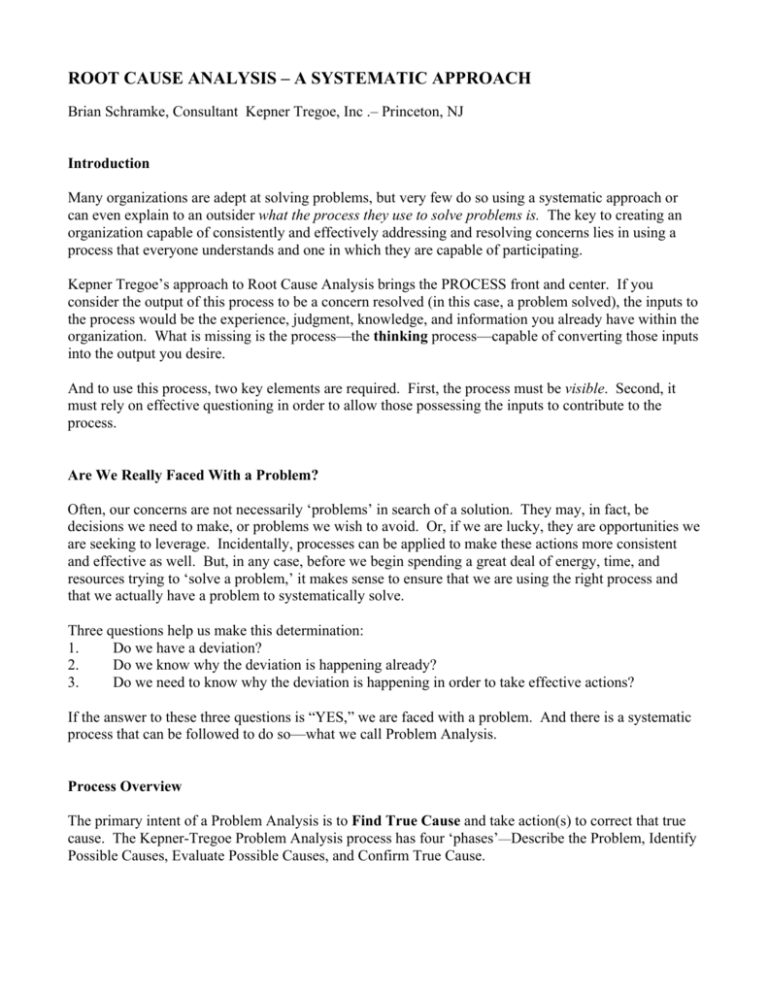
ROOT CAUSE ANALYSIS – A SYSTEMATIC APPROACH Brian Schramke, Consultant Kepner Tregoe, Inc .– Princeton, NJ Introduction Many organizations are adept at solving problems, but very few do so using a systematic approach or can even explain to an outsider what the process they use to solve problems is. The key to creating an organization capable of consistently and effectively addressing and resolving concerns lies in using a process that everyone understands and one in which they are capable of participating. Kepner Tregoe’s approach to Root Cause Analysis brings the PROCESS front and center. If you consider the output of this process to be a concern resolved (in this case, a problem solved), the inputs to the process would be the experience, judgment, knowledge, and information you already have within the organization. What is missing is the process—the thinking process—capable of converting those inputs into the output you desire. And to use this process, two key elements are required. First, the process must be visible. Second, it must rely on effective questioning in order to allow those possessing the inputs to contribute to the process. Are We Really Faced With a Problem? Often, our concerns are not necessarily ‘problems’ in search of a solution. They may, in fact, be decisions we need to make, or problems we wish to avoid. Or, if we are lucky, they are opportunities we are seeking to leverage. Incidentally, processes can be applied to make these actions more consistent and effective as well. But, in any case, before we begin spending a great deal of energy, time, and resources trying to ‘solve a problem,’ it makes sense to ensure that we are using the right process and that we actually have a problem to systematically solve. Three questions help us make this determination: 1. Do we have a deviation? 2. Do we know why the deviation is happening already? 3. Do we need to know why the deviation is happening in order to take effective actions? If the answer to these three questions is “YES,” we are faced with a problem. And there is a systematic process that can be followed to do so—what we call Problem Analysis. Process Overview The primary intent of a Problem Analysis is to Find True Cause and take action(s) to correct that true cause. The Kepner-Tregoe Problem Analysis process has four ‘phases’—Describe the Problem, Identify Possible Causes, Evaluate Possible Causes, and Confirm True Cause. Describe the Problem This phase of the process is aimed at gathering the facts surrounding the problem in a systematic fashion, and sorted and organized in such a way as to make the analysis of the information simpler. The first step in the process, State the Problem, provides a focal point to help keep the information gathering on track. The output of this step, the problem statement, is a short statement consisting of the object (what is having a problem) and a deviation (what the problem is). For example, a problem with which I helped a client produced the following Problem Statement: Breeder Chicks are Runting/Stunting. The next step is to gather information (facts) about the problem statement. Specifically, we are looking for information about What the problem is, Where it is located, When it occurs, and the Extent or size of the problem. In addition, we need to understand not only the What, Where, When, and Extent information for what IS having the problem, it is also helpful to know about what COULD BE but IS NOT having the problem. Following through with the Breeder Chicks are Runting/Stunting problem, we were able to gather the following information: WHAT: Breeder chicks were experiencing runting/stunting, but broiler chicks were not. The problem was runting/stunting, not deformities or oversize growth. WHERE: This was occurring in Malaysia, but not in Taiwan or in the United States facilities. Within the Malaysian facility, we were seeing it in the general population coops, but not in the incubator coops. WHEN: This problem was first noticed in July, 1994 and had not been experienced prior to that. It appeared that the runting/stunting was occurring in some months of the year, but we did not have enough data to state this as fact. The runting/stunting first began to be observed when chicks were 12 – 16 weeks old, not in younger chicks or more mature chicks. EXTENT: The size of the problem (number of chicks experiencing the problem, etc.) seemed to vary a good bit. More data was needed in order to draw conclusions, although it was stable (i.e., not getting worse, but not getting better). Identify Possible Causes Now that we have gathered all of the relevant facts and sorted them in a logical manner, it is time to identify the possible causes we think may be responsible for the problem. Very often, knowledge and experience alone will allow us to speculate as to what the possible causes are, in which case this phase merely helps make the thinking visible. However, knowledge and experience can be supplemented by use of a step in this phase know as Distinctions and Changes. This is particularly useful when you either have too many ideas as to what the possible cause is, or you have absolutely no idea. One of the inherent dangers of attempting to solve problems without a process as the backbone is that these efforts tend to broaden the amount of information that needs to be analyzed, rather than narrow the focus. The most common reason for this is people’s natural tendency to look at all changes as sources of the cause for problems. While it is true that THE true cause is the result of A change, what the Distinctions and Changes approach to identifying possible causes will provide is a focus on RELEVANT changes that could possibly be the cause of the problem. And relevant changes are those that are true only for the things that are distinct to the IS information. So, when looking for distinctions in the data we had collected about the poor breeder chicks that were runting/stunting, we discovered the following: • Breeder chicks were smaller than broiler chicks and were also kept with their mothers longer. • The general population coops were outside and unprotected, whereas the incubator coops were not. The general population coops were also farther from the main offices. • July was the beginning of monsoon season. • At age 12 – 16 weeks, the breeder chicks were first moved out of the incubator coops. Now, following the process, the only relevant changes that might be the cause of the runting/stunting MUST be changes true only for these distinctions. When we started talking about changes around these distinctions, we found: • A change, around the fact that breeder chicks are smaller in size than broiler chicks, was that the minimum weight requirement (what is considered to be a ‘healthy’ chick) was reduced as a matter of policy in January, 1994. • All of the other distinctions had no changes (i.e., breeder chicks had always been kept with their mothers longer, monsoon season had always begun in July, etc.). Now we have revealed distinctions between information about the problem, compared to information about what did not have the problem, and also identified relevant changes. This lets us identify possible causes based on this focused set of information. In many cases, the changes themselves will suggest possible causes. Other times, changes in combination with distinctions or distinctions alone, or changes in combination with other changes, might lead us to the possible cause. In any case, the possible causes generated, using this technique, will be based on relevant facts and will often generate information and perspective that experience and knowledge alone did not. Using both knowledge and experience (K&E) and distinctions and changes (D&C), we identified several possible causes for our breeder chicks runting/stunting: • Poorly trained caretakers not properly feeding chicks (K&E); • Grandparent/parent lineage has genetic defect (K&E); • Minimum weight requirement not sufficient to support chick immune system working properly (D&C); and • Exposure to outside elements causes retarded growth rate (D&C). Evaluate Possible Causes Now that we have the facts about the problem and have identified possible causes for the problem, it is necessary to evaluate these possible causes and see if they are supported by the facts. This evaluation, also known as ‘testing’ the possible causes, is a destructive step in that its intent is to eliminate from consideration as many of the possible causes as we can, based on facts, in order to continue focusing on the one true cause. For each of the possible causes, we need to ask a very specific question for each of the facts we have gathered during the Describe the Problem phase. That question is “If the possible cause is the reason for the problem, how does it explain both the IS information and the IS NOT information?” The answer to that question can only be one of three things: (1) It does explain it; (2) It doesn’t explain it; or (3) It explains it, but only if you assume something. So, following the saga of the breeder chicks to this step of the process, our analysis looked something like this: Question: If poorly trained caretakers are not properly feeding the chicks is the reason we are experiencing runting/stunting, how does it explain that it is only happening to breeder chicks, but not to broiler chicks? Answer: It cannot be explained…it is unlikely that the caretakers have a vendetta solely against breeder chicks, yet continue to care adequately for broiler chicks. Since the possible cause could not be explained when taking the facts into consideration, our conclusion is very simple. This could not possibly be the cause of the problem. Based on that conclusion, then, we no longer waste our time discussing this as a possible cause and now our efforts are directed towards analyzing the remaining three possible causes. We were quickly able to eliminate genetic defects via lineage as the true cause of the breeder chicks runting/stunting, based on the fact that the parents/grandparents of the Malaysian chicks were identical to that of the chicks raised in Taiwan and the United States. Similarly, the chicks had always had the same amount of exposure to outside elements, even prior to the onset of this problem; and weight requirements for chicks had been reduced for all breeding facilities, not just the facility in Malaysia. However, an interesting theory began to develop once we began considering changes in combination with other changes. The most striking combination created the following question: How could a reduced weight requirement for breeder chicks, in combination with their exposure to outside elements, cause this runting/stunting? Analysis of this theory against the facts of the case made quite a bit of sense, with the exception of when the runting/stunting was occurring. As you may recall, we did not have WHEN information good enough to be considered factual. But, based on what we did know, if we assumed that the runting/stunting began and ended in lockstep with the beginning and end of monsoon season (i.e., runting/stunting began in July, ended in August/September timeframe), this possible cause quickly emerged as the Most Likely Cause. With this as our premise, the actions we needed to take next quickly became clear. First, we needed to verify that the pattern of occurrence did actually fit the July through September window. Were this not to prove true, then we would need to continue searching for true cause. And second, if this did prove true, we would need to quickly reach a decision regarding how best to correct this situation. Finally, several alternatives for corrective action were briefly discussed, such as rescinding the weight requirement reduction, providing a ‘shot’ for breeder chicks designed to temporarily boost their immune systems, and simply constructing enclosures at the facilities in Malaysia to shelter the chicks during monsoon season. Conclusion In the grand scheme of things, this process did not “solve” the problem. No process can! What it did help us to do, however, was focus our energy, time, resources, and ultimately our financial investments in the areas where they could provide the most value. It allowed a cross-functional group, many of whom had conflicting perspectives and motives, to objectively assess the facts and determine in a relatively short period of time what actions should be taken in order to resolve the issue with which they were all confronted. And, in the end, this systematic approach maximized and leveraged the knowledge and experience of the entire group to achieve the results we all desired.
